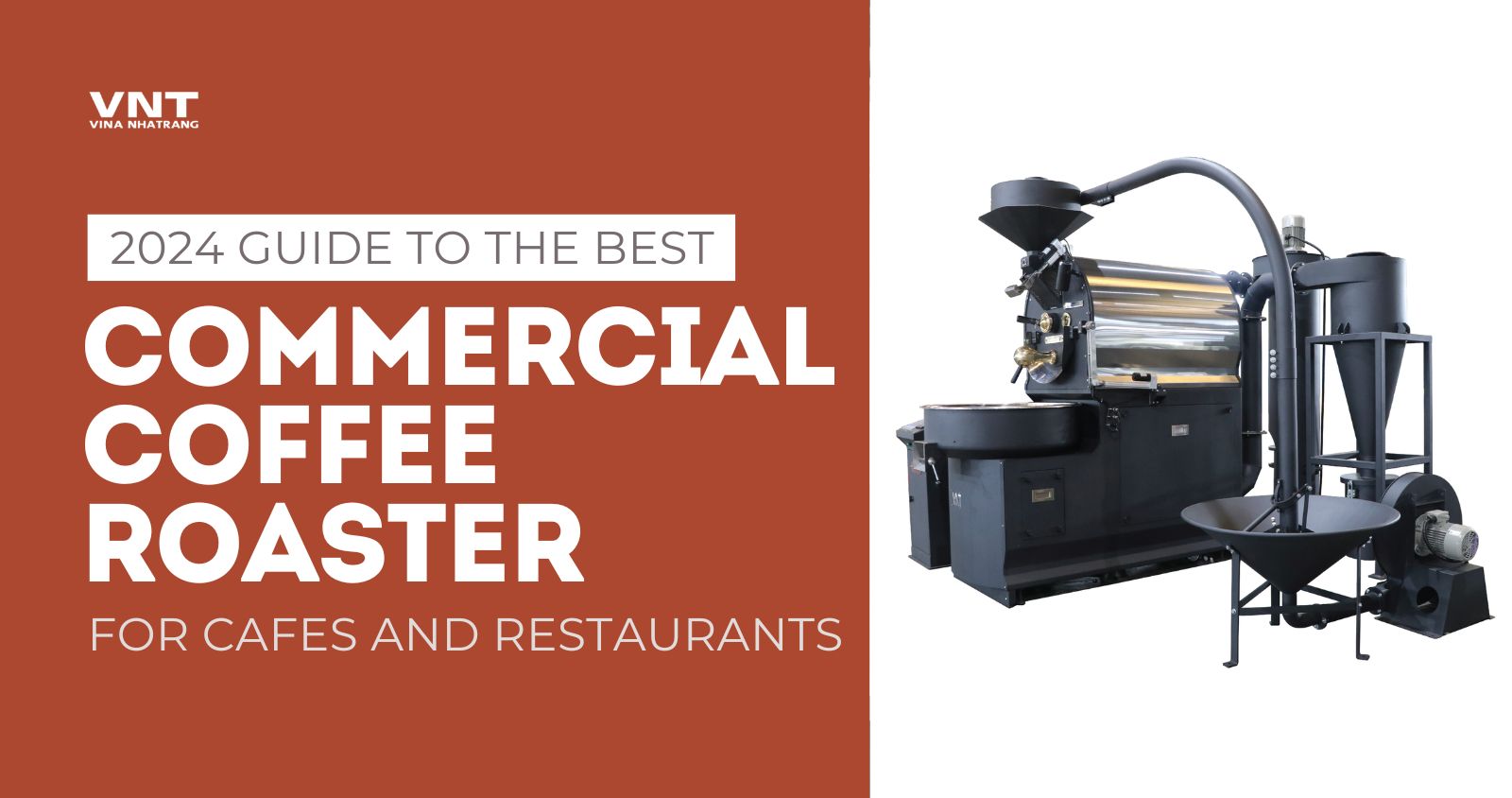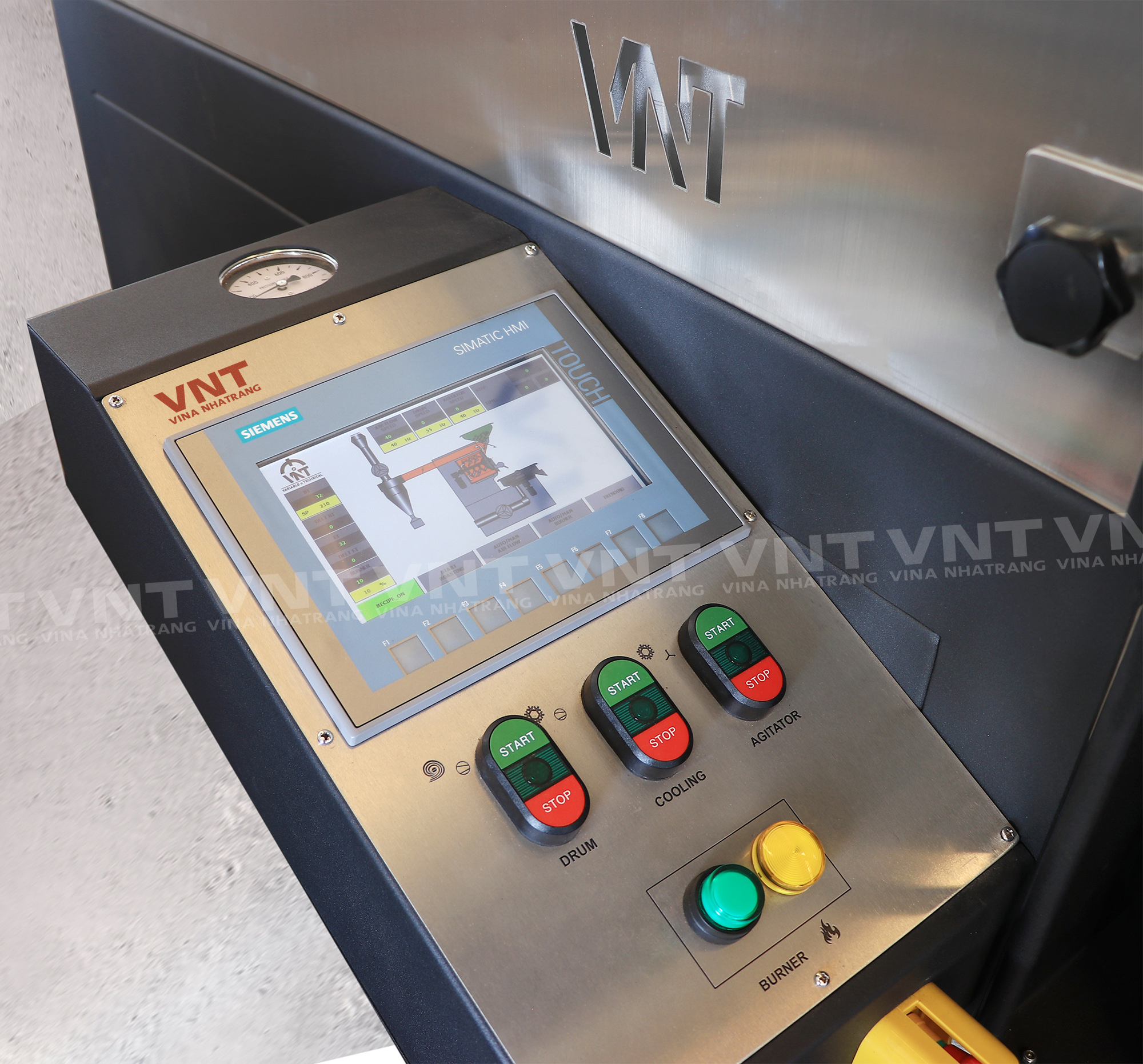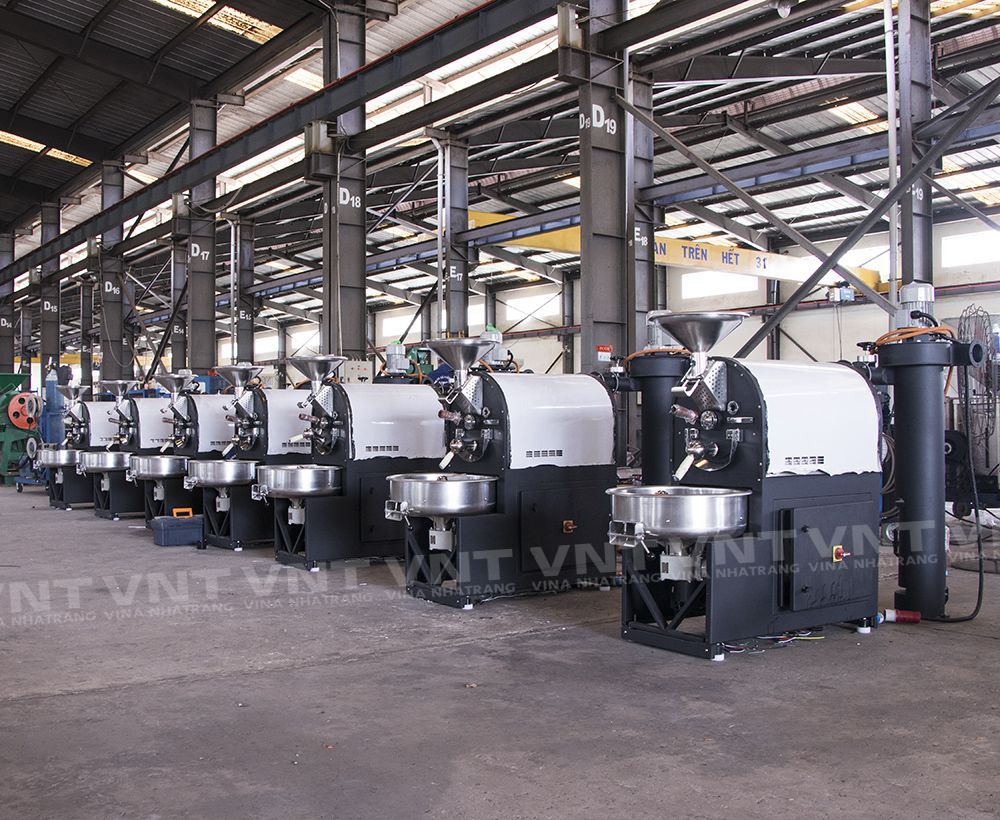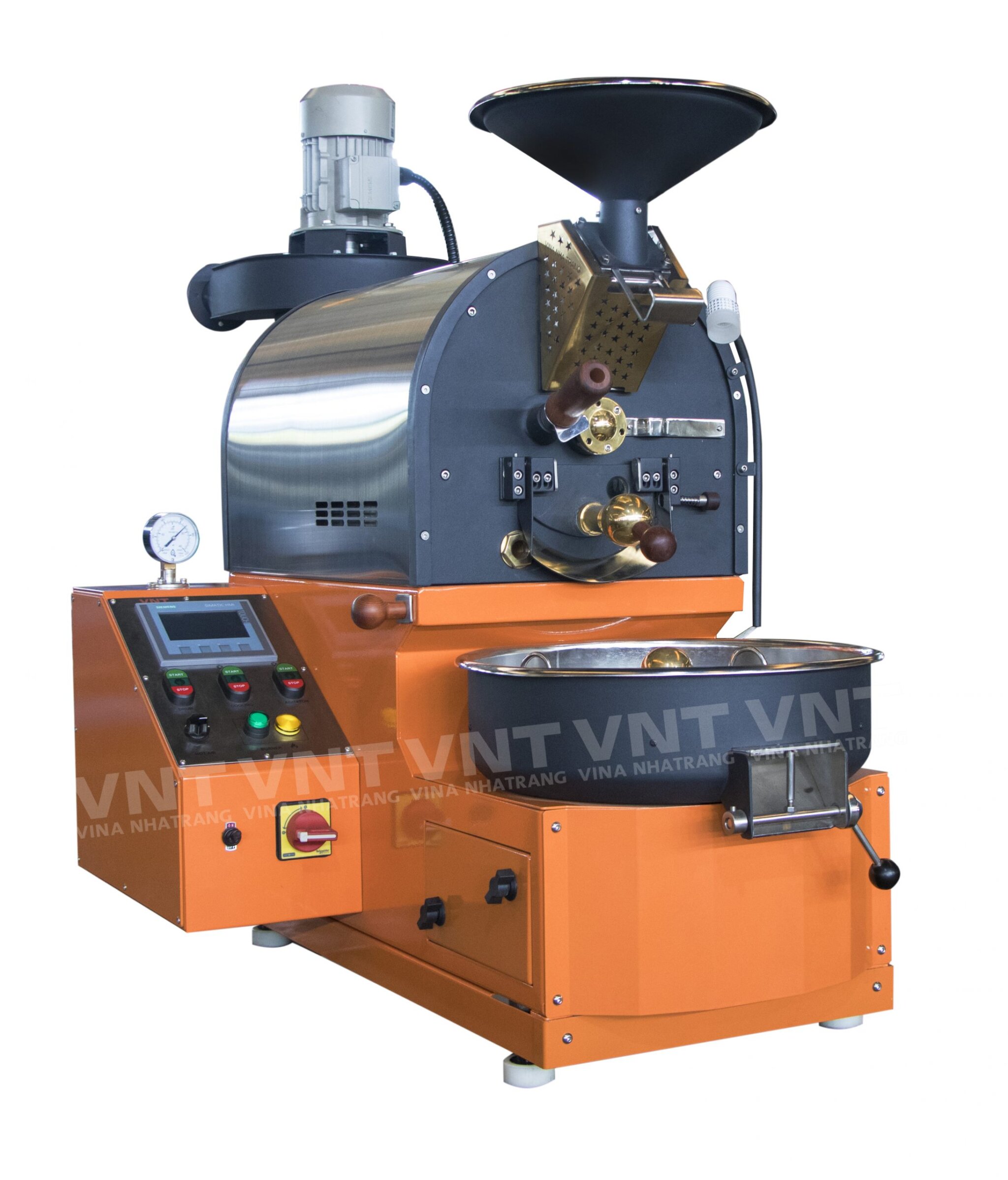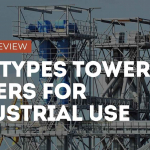Selecting the optimal commercial coffee roaster is a labyrinthine task for small cafes and restaurants, posing the question: which roaster yields the finest brew while offering sustainable operations and ease of use?
The answer is not monolithic.
As of the current understanding in the industry, discerning the right coffee roastery technology requires a granular analysis of throughput, roasting dynamics, and the subtleties of flavor profiles that each type of roaster can uniquely provide.
Essential Features of Top Coffee Roasters
True mastery in roasting is facilitated by precision control over the process, ensuring that each batch meets the distinct taste profiles required. Essential to accomplishing this are roasters with superior thermal conductivity, robust construction, and advanced airflow systems. Only when these elements synchronize can a roaster deliver uniformity in bean development, culminating in the expected flavor consistency that distinguishes specialty coffee.
In contemplating an upgrade or a first-time acquisition of a commercial roaster, cafés should prioritize equipment that comes with data logging capabilities, allowing them to meticulously track and replicate successful roasts. Furthermore, the incorporation of user-friendly interfaces and automation can be significantly advantageous. These features not only enhance the ease of operation but are crucial in reducing the dependency on highly skilled personnel, ensuring the cafe’s resilience in the dynamic specialty coffee market.
1. Consistent Heat Distribution
Uniform heat application is critical, ensuring roast profiles match expectations, and bean development is symmetrical. The capability to provide even thermal energy across all beans maximizes potential quality in every batch.
In the realm of commercial roasting, achieving this equilibrium means utilizing a roaster with a sophisticated drum design, often combined with a forced-air mechanism. This allows for a steady transfer of heat, which is indispensable for achieving a homogenous roast.
Every bean counts in achieving the desired cup quality.
Advanced convection systems facilitate better heat management to prevent hotspots. When roasters achieve this level of homogeneity, the end result is a coffee that expresses the full spectrum of its intended characteristics, offering both complexity and balance to the discerning palates of your clientele.
2. Capacity and Space Considerations
Determining the right roaster size is essential; underestimating demand can lead to inefficiencies and bottlenecks in production.
Since 2016, specialty coffee consumption has grown significantly, necessitating careful consideration of both current and projected future volumes when selecting a roaster.
| Capacity | 36 – 48kg/hr, 6 – 12kg/batch |
|---|---|
| Gas consumption | 3 – 4kg of gas/100kg of coffee beans |
| Electricity consumption | 3.36 KWh |
| Power supply | 3 phase – 50Hz |
| Dimension (LxWxH) | 2800 x 1000 x 2250 (mm) |
| Approx. weight | 800kg |
Explore other batch sizes of the VNT’s Commercial Coffee Roaster
Yet, it’s not solely about volume; the roaster’s footprint must also fit within the spatial constraints of your establishment without hindering operations.
Beyond the machine itself, additional space for green coffee storage, chaff collection, and maintenance access must be accounted for in planning your roastery setup.
Selecting a roaster that aligns with both your capacity needs and spatial limitations is paramount for effective operation.
3. User-Friendly Controls
Ease of operation is paramount when selecting a commercial coffee roaster.
In today’s market, we’re witnessing an emphasis on sophisticated yet intuitive control systems. They enable precision and flexibility in the roasting process, proving invaluable for small cafes and restaurants where staff may not always possess deep technical expertise. Such systems often feature pre-programmable profiles, roast level settings, and troubleshooting guides to streamline the roasting operation.
Furthermore, user-friendly interfaces ensure a reduced learning curve. A well-designed digital or analog control panel, complemented by clear instructions, can considerably shorten the initial training period. This allows staff to navigate the different roasting stages—from the charge to the drop—with confidence and finesse, maintaining consistency in every batch.
For many cafes, the accessibility of after-sales support is crucial. Advanced roasters armed with diagnostic software can be remotely monitored, enabling swift technical assistance. This interoperability guarantees not only the maintenance of roasting quality but also minimizes downtime. Such integrated systems serve to accentuate the roaster’s user-friendliness, fortifying the establishment’s capability to deliver consistent, high-quality coffee without technical obstacles.
Evaluating Durability and Maintenance
When selecting a commercial coffee roaster, the materials utilized in construction are pivotal to its longevity and resilience in a bustling café environment. Stainless steel roasters, for instance, offer an outstanding balance of durability and cleanliness due to their resistance to high temperatures and corrosion.
Moreover, the design and engineering of the roaster also influence its maintenance demands. A roaster with accessible components and modular design simplifies routine maintenance tasks, such as cleaning and the replacement of wear items like bearings or seals, ensuring operational robustness and extended equipment life.
Assessments of maintenance frequency and complexity should factor into the purchasing decision. A roaster with easy access to comprehensive customer support and readily available spare parts streamlines the upkeep, which is indispensable for uninterrupted coffee production.
Construction Material Longevity
The robustness of a coffee roaster is significantly governed by the materials from which it is crafted.
- Stainless Steel: Renowned for its durability, ability to withstand high temperatures, and resistance to oxidation and corrosion.
- Cast Iron: Offers exceptional thermal mass, contributing to consistent roasting results, but can be susceptible to rust if not properly maintained.
- High-Grade Aluminum: Lightweight and efficient in heat conduction, but may be less durable than steel or iron.
- Carbon Steel: Known for its strength, yet it requires a protective coating to prevent corrosion.
- Ceramic: Provides excellent heat retention and distribution, often used in smaller, specialty roasters.
Selecting materials with a track record of longevity is paramount for minimizing downtime.
Indeed, material choice not only impacts the roaster’s lifespan but also its maintenance rhythms and overall lifecycle cost.
Accessibility for Cleaning
The accessibility of a coffee roaster for cleaning is fundamentally tied to its maintenance and hygiene standards. Regular cleaning is crucial for operational efficiency, flavor integrity, and safety.
Ease of disassembly can significantly reduce the downtime associated with cleaning cycles. It ensures thorough maintenance with less effort.
Current high-performance models often integrate user-friendly design elements, such as removable panels and tool-less access points that facilitate swift and comprehensive cleaning. Attention to these features can prevent contamination and extend machine lifespan.
Moreover, equipment with well-designed cleaning access points lessens the risk of damaging components during maintenance. It is critical to choose roasters that prioritize accessibility for cleaning to maintain consistent roasting quality and uphold stringent health standards, which is indispensable in the foodservice industry. In particular, compliance with certifications such as NSF International’s health and safety standards is a benchmark for sanitation that is highly regarded within the industry.
Service and Warranty Options
Robust service and warranty programs are fundamental to the longevity and reliability of commercial coffee roasters. Offering comprehensive coverage, they safeguard against unforeseen malfunctions and maintenance issues.
Extended warranty periods provide peace of mind and financial predictability for small cafes and restaurants. Consistent and accessible technical support ensures rapid resolution to any operational impediments.
When evaluating service and warranty options, it’s vital to consider the availability of proprietary parts, the geographic reach of technicians, and the responsiveness of customer service teams. Timely maintenance and service can drastically reduce downtime and protect revenue streams.
Furthermore, warranties that encompass a broad range of issues—from component failures to labor costs—offer a security blanket for businesses. It is prudent to seek out manufacturers that demonstrate a commitment to customer success through exemplary post-sale support and proactively address potential disruptions with preventive maintenance guidance. The presence of comprehensive service plans, including those offering regular tune-ups, can result in increased roaster longevity and performance fidelity.
Factors Affecting Coffee Quality
The pursuit of exceptional coffee quality is contingent upon a multitude of variables that meticulously interplay to influence the final cup. Primary factors include the origin and variety of the coffee beans, which determine the intrinsic flavor profiles. Roasting modulates these flavors through complex chemical reactions, and the precision of the roast profile—its temperature curve and duration—is paramount in dictating the beans’ taste characteristics. Post-roast freshness and proper storage conditions retard the inevitable staling process and preserve delicate aromas. Additionally, grind consistency, extraction parameters, and water quality are critical elements at the brewing stage. Such comprehensive consideration ensures that small-scale establishments craft a superlative beverage, reflecting both skill and an in-depth understanding of these qualitative factors.
Roasting Speed and Temperature Control
Roasting speed and temperature play crucial roles in the development of a coffee’s flavor profile. Each bean’s unique chemistry demands precise thermal application to achieve peak aromatic and flavor expression. The ability to swiftly adjust roasting parameters is essential for small cafes and restaurants, which may need to produce a variety of roast profiles within a day.
For smaller operations, an agile and responsive roasting system is a non-negotiable requirement. During the roasting cycle, the bean’s cellular structure undergoes significant transformations, dictating the release of volatile compounds crucial to flavor. A commercial roaster that can shift temperature rapidly yet maintain stability provides the artful control needed to turn a good roast into an exceptional one, as even a few seconds can dramatically alter the roast’s outcome.
Equally important is the roaster’s capacity for rapid cooling. Once the desired roasting level has been reached, immediate cooling ceases further development, locking in the desired complexity and nuance. A roaster with an effective cooling feature ensures quality consistency, imperative for maintaining repeat business and a stand-out reputation in a competitive culinary market.
Balancing throughput with meticulous temperature regulation presents a perennial challenge. Advanced roasting equipment with built-in profiles and programmability offers sophisticated controls, enabling operators to replicate successful roasts with precision. Small cafes and restaurants benefit when selecting a roaster that complements their scale, ensuring high-quality output without underutilizing or overwhelming their operational capacities. Reliable machines integrating such features foster a harmonious balance between artisanal quality and efficient production.
Cooling Efficiency Post-Roast
Effective cooling mechanisms are vital to prevent over-roasting and preserve the delicate flavors crafted during the roasting process.
An expeditious cooling system directly impacts the beans’ taste profile.
Without swift cooling, residual heat can cause flavor imbalance, compromising the meticulously achieved roast profile and, consequently, the final cup quality.
The superior cooling system functions as a guardian of the bean’s integrity by rapidly dissipating heat, thereby stabilizing the beans at the desired roast level. Ensuring such quick cooling capacity is integral to operational excellence and the delivery of an exceptionally consistent product. Optimal cooling systems employ a combination of stirring mechanisms and forced airflow to cool the batch uniformly, thus averting potential hotspots that could degrade the coffee’s nuanced qualities.
The Impact of Drum Type
The drum type in a coffee roaster significantly influences the roast profile and bean development.
- Material Construction: Conductivity and heat retention characteristics vary, affecting thermodynamics during roasting.
- Interior Surface Design: The internal design dictates the bean movement, which is critical for even roasting.
- Drum Speed: Speed adjustments can alter the roast time and the heat transfer to the beans.
- Capacity: A drum’s size relative to batch volume plays a role in consistent heat application and roast uniformity.
- Ventilation: Proper drum ventilation ensures efficient smoke evacuation and air flow, crucial for flavor clarity.
Consistency in roasting is paramount for a harmonious flavor profile.
Selecting the appropriate drum type can propel a small café or restaurant’s coffee offerings from acceptable to exceptional.
Cost Versus Performance Trade-offs
In the sphere of commercial coffee roasters, the axiom “you get what you pay for” often prevails. Entry-level machines might represent an initial cost-saving, but can compromise on durability and consistency of roast. Conversely, high-end models come with advanced features and sophisticated controls that justify their elevated price points, aligning with the ambitions of establishments prizing quality over cost.
Balancing the scales of cost versus performance requires meticulous deliberation. A commercial roaster poised as a “bargain purchase” might be enticing, but could lead to escalated operational costs or inconsistent product quality. On the other hand, investing in a premium roaster, although daunting monetarily, can pay dividends in the form of superior roast quality, efficiency, and long-term reliability. Thus, it becomes crucial to evaluate the totality of a roaster’s value proposition when making a prudent investment decision.
Budget-Friendly Models
For the small café or restaurant, price-sensitive choices often dictate equipment selection, particularly in the domain of coffee roasting. However, it is essential not to conflate affordability with inferiority when considering the acquisition of a budget-friendly coffee roaster.
Check out VNT’s Commercial Coffee Roasters with batch size from 1kg to 30kg
Several manufacturers offer economically priced roasters that have a capacity suitable for small-scale operations. These machines are often straightforward in design, less automated, and may lack some of the advanced monitoring features found in premier models. Nevertheless, they are capable of producing a consistent roast with proper use and maintenance. With this in mind, it is the knowledge and experience of the operator that often influences the quality of the roast as much as the sophistication of the machine.
In this segment, durability remains a pivotal factor to consider. An economy model should not necessitate frequent repairs or replacements, which would otherwise erase any initial cost benefits. Favoring models with robust construction and reliable components can secure operational stability and uphold the coffee’s quality, attributes that are indispensable in sustaining customer satisfaction and business reputation.
Finally, the choice of a cost-effective roasting solution should not undermine the café or restaurant’s goals in delivering a high-caliber coffee experience. A judicious selection can indeed yield a machine that balances fiscal prudence with the requisite functionality to produce a flavorful roast. A thorough assessment of warranty, post-purchase support, and available upgrades can fortify the value proposition of these budget-friendly models, assuring their place as a prudent investment in the competitive landscape of the coffee industry.
Energy Efficiency and Operating Costs
Energy efficiency directly impacts operating expenses, notably in the realms of small café and restaurant operations where margins are often slim. Selecting an energy-conscious model is vital for cost containment.
| Capacity | 36 – 48kg/hr, 6 – 12kg/batch |
|---|---|
| Gas consumption | 3 – 4kg of gas/100kg of coffee beans |
| Electricity consumption | 3.36 KWh |
| Power supply | 3 phase – 50Hz |
VNT’s Commercial Coffee Roaster is designed with power saving features
Models utilizing advanced insulation retain heat more effectively, reducing energy consumption. Innovations in roaster design can further amplify these savings.
Roasters equipped with variable frequency drives (VFDs) allow for precise control over motor speeds, optimizing both thermal and electrical energy use. This results in a reduction of energy expenditure, contributing to lower ongoing operational costs while maintaining roasting consistency and quality.
Furthermore, it is imperative that businesses consider the potential for regulatory changes concerning energy usage. Opting for roasters adhering to or surpassing current standards ensures adaptability to future regulations. This foresight secures long-term savings and underscores commitment to sustainability—a growing consumer value that can enhance a brand’s reputation and competitive edge.
Resale Value and Upgradeability
Selecting a commercial coffee roaster is not merely about addressing present needs; one must consider the longevity and future-proofing aspects, particularly resale value, which plays a critical role in the eventual return on investment. The roasters’ brand reputation, durability, and market demand significantly impact resale value.
However, performance degradation over time can affect resale potential. Regular maintenance and updates are crucial to preserve the machine’s value.
Additionally, as production demands evolve, the ability to upgrade existing equipment is paramount. Roasters with modular designs (facilitating component upgrades or replacements) enhance longevity and adaptability.
Investing in a roaster with a strong track record of performance helps safeguard the value of the asset over time. Prospective buyers will pay a premium for a well-maintained machine, bolstered by a reputation for reliability and efficient operation.
When it comes to upgradeability, access to advanced technology is critical. Integrating new features that improve roast quality or efficiency can significantly increase a roaster’s appeal in a dynamic market and ensure that the asset remains current with industry norms.
Ultimately, the choice of coffee roaster should align with the establishment’s growth trajectory. Favoring roasters with high resale value and upgrade paths can ensure the most tactical allocation of capital throughout the business’s expansion.
